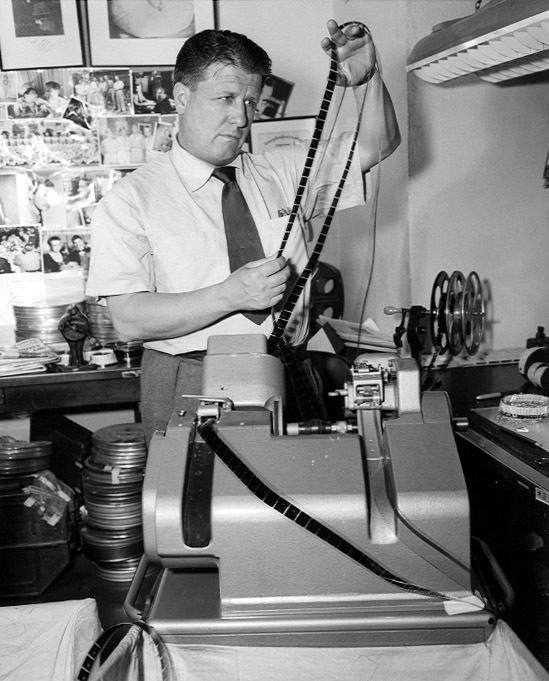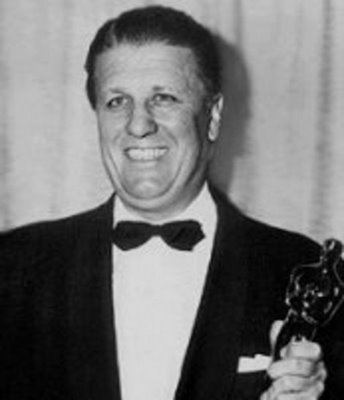Cause of death Heart attack Children George Stevens Jr. Role Film director | Name George Stevens Years active 1915–1970 | |
 | ||
Awards Academy Award for Best Directornominated in 1943 for The More the Merrierawarded in 1951 for A Place in the Sunnominated in 1954 for Shaneawarded in 1956 for Giantnominated in 1959 for The Diary of Anne FrankLegion of Meritstar on the Hollywood Walk of FameIrving G. Thalberg Memorial AwardLifetime Achievement Award from the Academy of Motion Picture Arts and Sciences (1954)National Board of Review Award for Best DirectorNew York Film Critics Circle Award for Best Director Books George Stevens, Royal Australian Navy Radio Mechanics: A History of the Torrens Era Movies Giant, Shane, A Place in the Sun, The Greatest Story Eve, The Diary of Anne Frank Similar People | ||
What s my line george stevens claudette colbert james mason panel sep 30 1956
George Cooper Stevens (December 18, 1904 – March 8, 1975) was an American film director, producer, screenwriter and cinematographer.
Contents
- What s my line george stevens claudette colbert james mason panel sep 30 1956
- George stevens on what s my line
- Film career
- Personal life
- Death
- Awards
- Archives
- References

Among his most notable films are A Place in the Sun (1951; winner of six Academy Awards including Best Director), Shane (1953; Oscar nominated), Giant (1956; Oscar for Best Director), and The Diary of Anne Frank (1959; nominated for Best Director).

George stevens on what s my line
Film career
He was born in Oakland, California, the son of father Landers Stevens and mother Georgie Cooper, both stage actors. His uncle was drama critic Ashton Stevens. He also had two brothers, Jack and writer Aston Stevens. He learned about the stage from his parents and worked and toured with them on his path to filmmaking. He broke into the movie business as a cameraman, working on many Laurel and Hardy short films, such as Night Owls (1930). His first feature film was The Cohens and Kellys in Trouble in 1933.

In 1934 he got his first directing job, the slapstick Kentucky Kernels. His big break came when he directed Katharine Hepburn in Alice Adams in 1935. He went on in the late 1930s to direct several Ginger Rogers and Fred Astaire movies, not only with the two actors together, but on their own. In 1940, he directed Carole Lombard in Vigil in the Night, and the film has an alternate ending for European audiences in recognition of World War II, which at the time the U.S. had not yet entered.
During World War II, Stevens joined the U.S. Army Signal Corps and headed a film unit from 1943 to 1946, under General Eisenhower. His unit shot footage documenting D-Day—including the only Allied European Front color film of the war—the liberation of Paris and the meeting of American and Soviet forces at the Elbe River, as well as horrific scenes from the Duben labor camp and the Dachau concentration camp. Stevens also helped prepare the Duben and Dachau footage and other material for presentation during the Nuremberg Trials. In 2008, his footage was entered into the United States National Film Registry by the Library of Congress as an "essential visual record" of World War II.
One result of his World War II experiences was that his subsequent films became more dramatic. The motion picture I Remember Mama from 1948 was the last movie that he made with comic scenes. He was responsible for such classic films as A Place in the Sun, Shane, The Diary of Anne Frank, Giant and The Greatest Story Ever Told. He ended his directing career with the 1970 film The Only Game in Town with Warren Beatty and Elizabeth Taylor. In the same year, he was head of the jury at the 20th Berlin International Film Festival. In 1973 he was a member of the jury at the 8th Moscow International Film Festival.
Personal life
Stevens was the father of television and film writer-producer-director George Stevens, Jr., the first CEO and director of the American Film Institute. George Jr. produced and directed the documentary about his father George Stevens: A Filmmaker's Journey in 1984 and is the father of Stevens' grandson Michael Stevens, also a television and film producer-director.
Death
Stevens died following a heart attack on March 8, 1975, on his ranch in Lancaster, California, north of Los Angeles. He is interred at Forest Lawn Memorial Park in the Hollywood Hills of Los Angeles.
Awards
As a lieutenant colonel in the United States Army, Stevens headed the U.S. Army Signal Corps unit that filmed the Normandy landings and the liberation of the Dachau concentration camp. For these contributions, he was awarded the Legion of Merit.
Stevens has a star on the Hollywood Walk of Fame at 1701 Vine Street. He won the Academy Award for Best Director twice, in 1951 for A Place in the Sun and in 1956 for Giant. He was also nominated in 1943 for The More the Merrier, in 1954 for Shane, and in 1959 for The Diary of Anne Frank.
Archives
The moving image collection of George Stevens is held at the Academy Film Archive. The film material at the Academy Film Archive is complemented by material in the George Stevens papers at the Academy’s Margaret Herrick Library.
